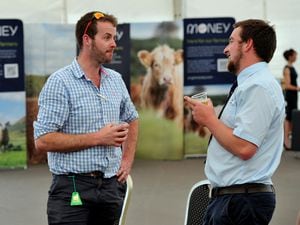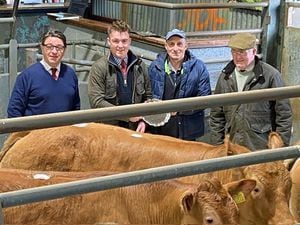Shropshire farming talk: How sustainability and profitability go hand-in-hand
Over the last 30 years, UK agriculture has taken huge strides in reducing its emissions, particularly in relation to Nitrous Oxide and Methane.

But with the sector still responsible for around 10% of gross UK greenhouse gas emissions the industry remains under the spotlight.
Balancing sustainability and profit can be a tricky act, but with the right measures in place farms can reduce their emissions and help to shore up their bottom line.
Establish your starting position: Whether looking at environmental or financial sustainability agriculture businesses firstly need to know their current position and where potential for improvements may exist.
Several carbon calculator tools are available, free-of-charge, which can be a useful starting point for identifying areas to change.
Taking short-term action for long-term benefits: The generic advice to reduce emissions by focusing on production and efficiency has been the bedrock of business consultancy for many years and as we look at some of the specific steps taken to reduce emissions we can, in many cases, also see financial benefits of such actions
Let’s take the livestock industry first. The scientific approach to grazing management which is now commonplace in the dairy sector, is now also being adopted by the forward-thinkers in the red meat sector. The improved grassland utilisation is producing enhanced daily liveweight gains, leading to reduced days to slaughter (or days to first calving of heifers) and hence improved profitability as well as reduced emissions.
Renewed interest in mixed herbage leys, to save fertiliser costs and subsequent emissions can also improve soil structure. Not only will this help with carbon sequestration it can help make ground more flood and drought resistant potentially leading to longer grazing seasons.
The strategic establishment of hedges and woodland on poorer land can not only help to sequester carbon but also offer valuable shelter and shade for livestock and by, reducing windspeed, soil erosion can be reduced as can evapotranspiration leading to less water stress on neighbouring crops and hence potentially better yields.
When considering the arable sector, many farmers have successfully embraced minimum or no till technology. With fewer passes to establish a crop, it reduces emissions as well as saves fuel use and machinery wear and, as soil compaction is remedied, many are also starting to report reduced need for fertiliser.
The use of variable-rate fertiliser application technology can not only help to reduce agrochemical costs and emissions but can also produce more uniform crops so attracting premium prices.
Seek support: It’s clear that many of the actions to reduce carbon emissions can also lead to improved financial stability thus, if well-planned, sustainability and profitability can go hand-in-hand.
For those not sure what steps to take next, speaking to peers, industry leaders and experts who understand your sector can be helpful to learn from the experiences of others. Working together we can help ensure British farming continues to prosper.
AMC have collaborated with the woodland trust to provide funding for tree and hedge planting, of up to 70% of the costs. You do not have bank with the Lloyds group to benefit from this. For more details, see woodlandtrust.org.uk/amc
This article is written by Andrew Connah, regional agricultural manager at the Agricultural Mortgage Corporation (part of Lloyds Banking Group)





